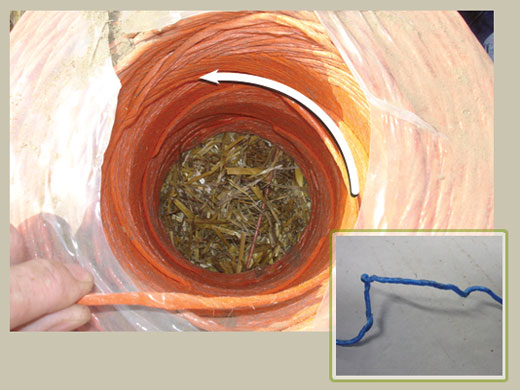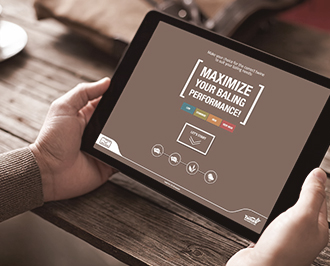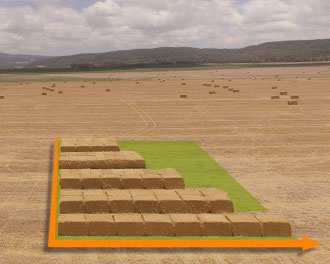FARM GROWN SOLUTIONS
Connecting up the many spools in a twine box is a time consuming task, so best to get it right to avoid problems!
Connecting the spools together in this way makes a flatter knot, more easily able to pass through the twine guides and tensioners.
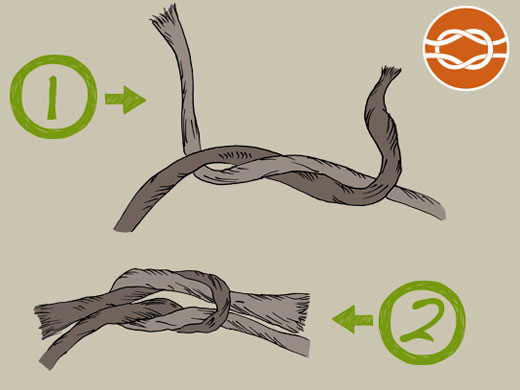
Often, the first 10 –20m of twine from a spool looks un-even and crimped.
This is quite normal and a characteristic of the way that twine is made and spooled before packaging. When tensioned, the twine straightens out.
On its path to the knotting mechanism, the twine is tensioned with spring clamps in the twine box and twine brakes immediately before the knotter, which require a specific tension setting.
When correctly tensioned, the kinked twine does not cause a problem.
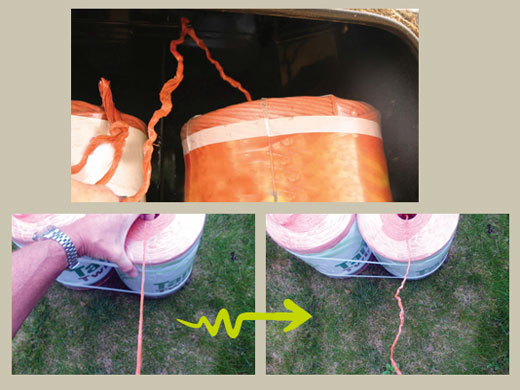
Take care with your spools before use, they are fragile. In order for the twine to run smoothly from the start to the very end, the spools must not be damaged or ‘shocked’ (dropped or crushed), as this will disrupt the careful winding pattern inside and cause the spool to fall apart internally.
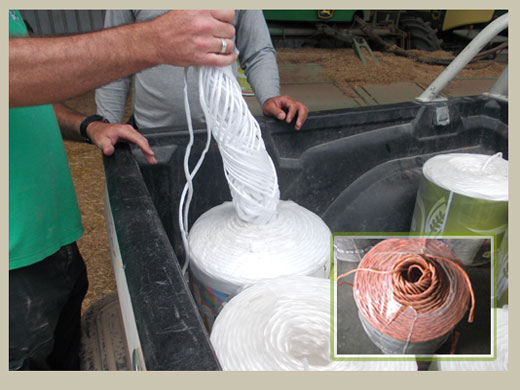
Twine is manufactured to be ONLY pulled from the spool from one end… the correct end !
To know it is coming from the correct end, when being drawn from the spool, it should un-wind from the inside surface in a counter-clockwise direction.
Get it wrong and pull from the wrong end…
very soon you’ll have a big knot in the twine and problems in the knotter!
